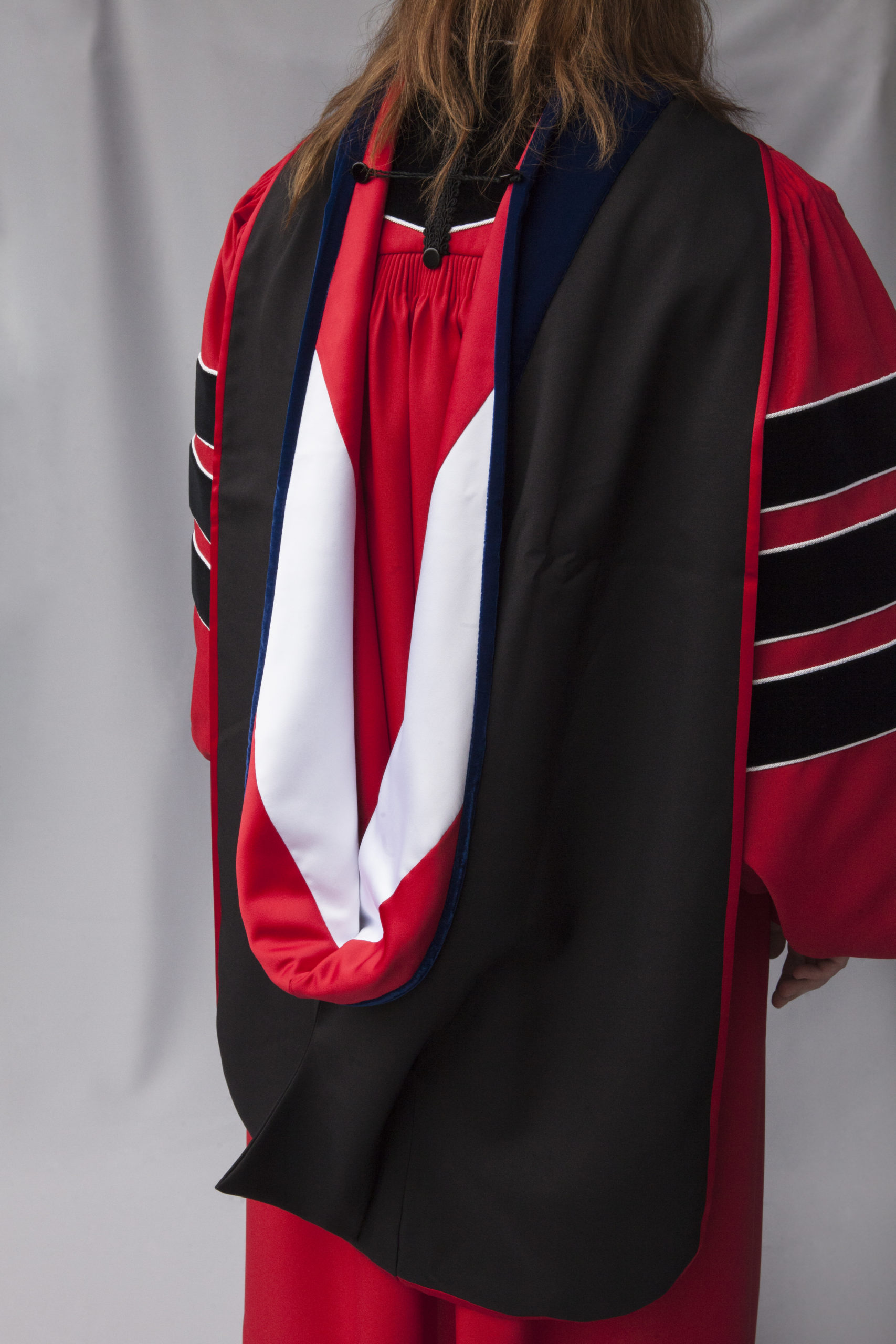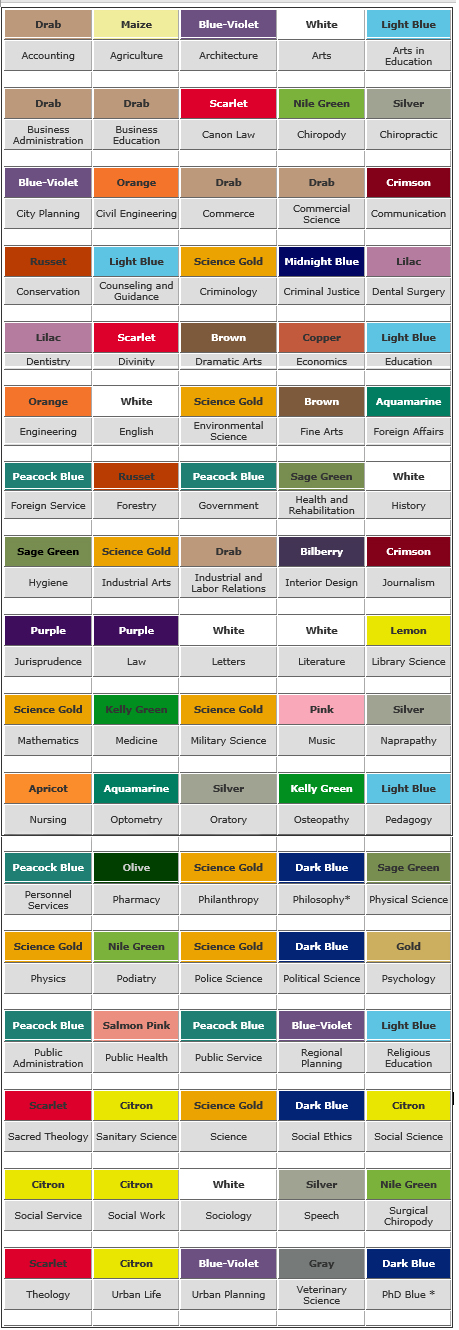The official "Academic Costume Code and Academic Ceremony Guide" includes a sentence that reads as follows: "The various academic costume companies maintain complete files on the approved colors for various institutions."
Once upon a time long ago, that sentence was correct. However, that was before colleges started springing up across the nation at a rapid rate in the last 50 years or so, and before institutions started the practice of changing their hood colors depending on style or taste or the desires of the student body or economics for bulk manufacturing (sometimes even on a yearly basis).
We are the direct manufacturer of academic regalia. This means one good thing and one bad thing (from your perspective).
The good thing is our prices are significantly lower than your degree-granting university would charge to sell them to you, yet the quality is the same or better than what they offer. That's because we are a relatively lean organization, independent, with over 60 years of experience, and we do not pay sales representatives, or have retail stores, or have a large advertising and marketing budget.
The bad thing is we cannot keep up with the changes each university makes to their regalia each year, and therefore require that our customers make their own inquiries to their degree-granting universities to discover what the current regalia colors are supposed to be for that school before placing an order.
We suggest you find out in advance of ordering what your school colors are, and which goes in the field and which goes in the chevron of the hood. You might also ask the following additional information: 1) whether they use 6 or 8 sides for their tam (if you are buying a tam); 2) whether they use a tam or a mortarboard for a Master's degree (if you are inquiring about a master's gown regalia set); 3) whether they use the standard black for the gown and hood shell color or if they have a special color; 4) whether they use an embroidered school emblem or symbol on the gown velvet an dif so what it looks like (these are fairly rare, but a few schools use them); 5) and if there is anything special about the regalia not covered by those questions.
Generally the best source for this information is the University book store or student store. Someone at most bookstores has all of this information.
You should know that you have the right to purchase your gown from any manufacturer, and not just the company that has a contract with your university. By getting this information on your own and purchasing your regalia from Academic Apparel, you will be saving money, and getting a regalia set that looks at least as good as what your school offers, and often it looks and feels significantly better than the bulk manufactured chinese gowns many colleges are now selling (and ours will last longer than those gowns too).
While we would really like to help you obtain this information, and hope to some day send out surveys each year to each university asking for this data, it is beyond our abilities to do so right now. If you are willing to do the footwork to find this information out, we know you will get a superb robe, hood, and tam from us, at prices that cannot be beat.



